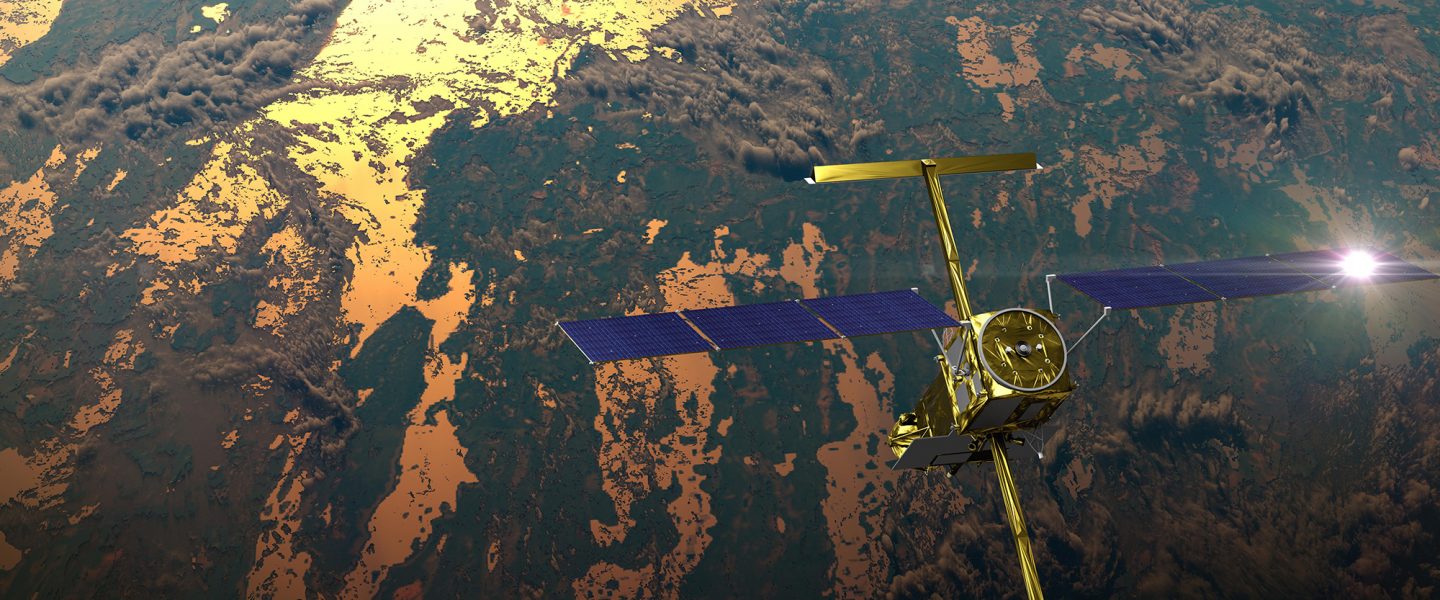A new study shows that losses are global in both arid and humid regions and could have significant impacts on a quarter of Earth’s population.
|
Listen To This Story
|
Earth’s lakes are drying up.
From 1992 to 2020, more than half of the world’s largest lakes, which account for 95 percent of all the lake water storage on the planet, lost “significant” amounts of water, according to a recent study in Science. The trend held for both natural lakes and human-created reservoirs and for both dry and wet regions. As a result, roughly one-quarter of the human population now lives in a drying lake basin, a situation threatening water supplies, hydroelectric power, recreational opportunities, and more, the study suggested.
The study attributed the losses primarily to global climate change, which is increasing evaporation. It also identified steadily growing human demand.
“I was surprised by this drying trend,” said Fangfang Yao, a climate fellow at the University of Virginia and the study’s lead author. “This had been seen locally in other studies, but we show that this pattern is global.”
Yao and colleagues obtained their estimates by combining almost 250,000 images from the Landsat satellite missions, altimetry from nine satellites, and lake-level measurements made from the ground. They obtained an average of six lake-level estimates per year for each of the studied lakes. The scientists then used climate and hydrological models to determine changes in both elevation and areal coverage, from which they calculated the volume of the study’s 1,972 lakes and reservoirs.
“Lake levels fluctuate annually and interannually, so you need these 30-year kinds of observations to estimate a trend,” said Yao. “We started with 1992 because that’s when Landsat 2 images became available. Before that, global coverage was spotty. But we really got good data.”
“Lake levels fluctuate annually and interannually, so you need these 30-year kinds of observations to estimate a trend.”
“The results are robust, as they were able to use multiple data sources to compile the most complete and temporally dense time series of lake water storage globally,” said Xiao Yang, an assistant professor of Earth sciences at Southern Methodist University who was not involved in the study.
The Dry Get Drier — And So Do the Wet
The researchers examined 1,051 natural lakes, each with a surface area of 100–377,000 square kilometers (~36,600–145,500 square miles), and 921 reservoirs, with surface areas of 4–67,000 square kilometers (~15,400–25,900 square miles), across all seven continents. They found that globally, 53 percent of the lakes and 64 percent of the reservoirs studied experienced significant losses. Combined, they lost an average of 21.5 gigatons (600 cubic kilometers) of water per year — the equivalent of all the water consumed in the United States in 2015.
Natural lakes lost an average of 26.4 gigatons per year, whereas reservoirs recorded an annual increase of 4.9 gigatons — the result of 183 new reservoirs impounded during the study period. About a quarter of the lakes saw large gains, usually in “dam-construction hotbeds,” the Science paper noted, or in remote and underpopulated regions, such as the Inner Tibetan Plateau and the Great Plains of North America.
The researchers said that just 20 major lakes accounted for 80 percent of the total water loss, led by the Caspian Sea, the world’s largest inland body of water, which lost half of its volume. But major losses were recorded across the globe, including in the United States, led by substantial declines in California’s Salton Sea and Utah’s Great Salt Lake. And several lakes, such as Gowd-e-Zareh in Afghanistan, which contained 4 times as much water as Lake Mead when the study began, vanished almost completely.
The drying trend was prevalent across both arid and humid regions, the study reported. “Previous climate studies have indicated that the dry get dryer and the wet get wetter,” Yao said. “We found that the dry do get dryer, but there are losses in wetter areas as well.”
Losses Could Have Major Effects
The researchers identified three leading causes of the global decline in lake levels. The first is Earth’s warming climate, which is significantly increasing both water and air temperatures, producing higher rates of evaporation. The team’s models said that global warming was the primary culprit in the disappearance of Lake Gowd-e-Zareh.
Second is overconsumption of water, driven by climate change, increasing populations around lakes and reservoirs, and inefficient water management plans, Yao said. Human activity got most of the blame for the massive water losses in the Great Salt Lake and the Salton Sea.
Third is increased sedimentation, especially in reservoirs, whereas “natural climate variability plays some role as well,” Yao said.
Because such a large fraction of the population inhabits desiccating lake basins, continued water loss could have serious consequences, said Yang. “This is especially important if those water bodies are used as drinking water sources or sources for agriculture or industry,” he noted. “In addition, declining storage in the reservoirs due to sedimentation can also compromise the designed functions of the reservoir to manage flood and drought. Recreationally, declining water storage, increasing water temperature, and a host of other climate warming–induced effects on lakes can all lead to a decline in water quality and damage the ecosystem services lakes provide to us.”
“Lakes are hot spots for storing carbon, like the oceans. But if they warm up, their capacity to store carbon dioxide goes down.”
Lower lake levels could exacerbate climate change by reducing the lakes’ ability to store carbon, Yao said. “Lakes are hot spots for storing carbon, like the oceans,” he said. “But if they warm up, their capacity to store carbon dioxide [CO2] goes down. And in some highland regions, where we see higher degrees of warming in these bodies, we’re seeing a big loss in protective ice cover. The ice-covered duration gets shorter, so the lakes lose more water, which means they can lose CO2.”
Yao said he plans to extend the research to include smaller lakes. Although they account for a tiny fraction of the planet’s surface water, limiting their global significance, changes in storage can have big local impacts.
New satellite missions, such as NASA’s Surface Water and Ocean Topography (SWOT), which was launched last December, should provide the resolution and coverage needed to incorporate the smaller bodies.
“I’m very excited about SWOT,” Yao said. “A single mission will provide estimates for large and small lakes, so we can extend to more water bodies. It may even make it possible to add river discharge, so we can really understand what’s going on in terms of hydrology and what it means for water storage.”
This story by Damond Benningfield was originally published by Eos Magazine and is part of Covering Climate Now, a global journalism collaboration strengthening coverage of the climate story.





